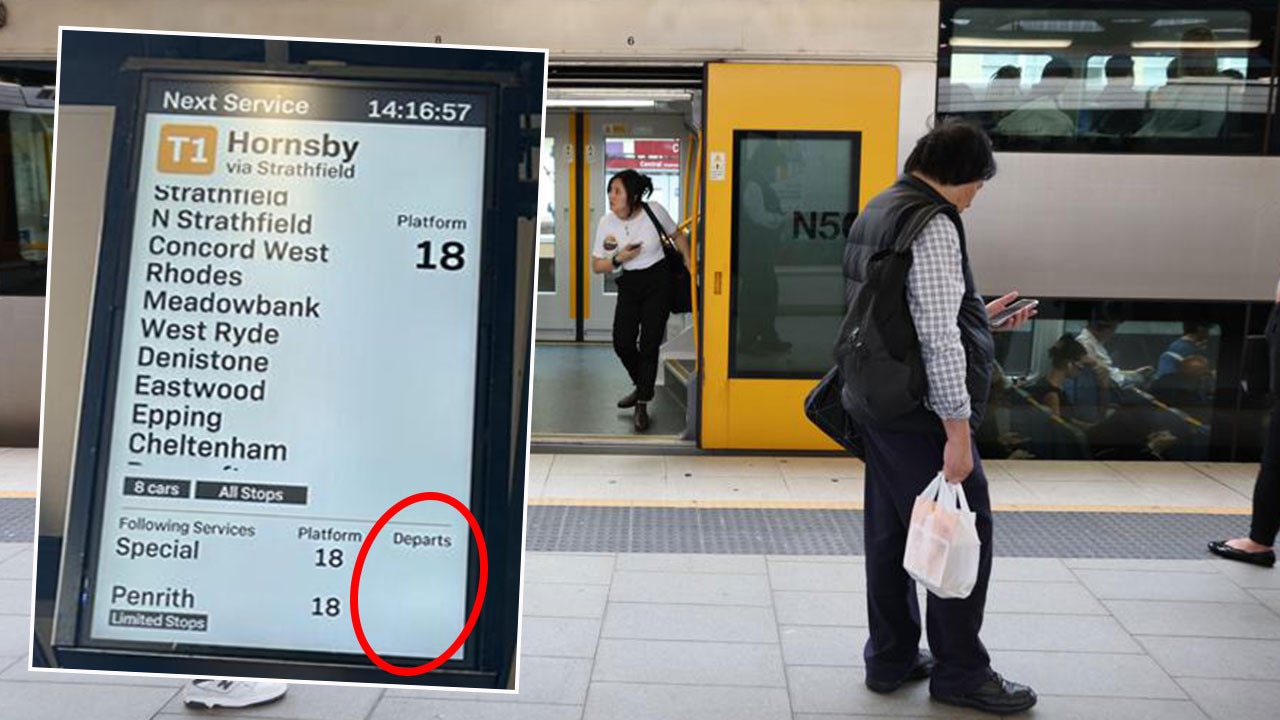History feature: Pivotal decision cemented Qantas’ role as safe, affordable, global airline
Qantas’ pivotal decision not to buy the world’s first commercial jet airliner, the de Havilland Comet which was soon to suffer three tragic crashes, paved the way for its successful first flight from Sydney to San Francisco, 60 years ago on Monday.

It was a great moment in Australian aviation. A sleek, modern Boeing 707, with the distinctive flying kangaroo logo prominently displayed on the aircraft’s livery, sat on the tarmac at Sydney’s Mascot Airport awaiting Australia’s leap into the age of the jet airliner.
Apart from the usual safety checks being carried out by ground and flight crew, there were also other safety concerns.
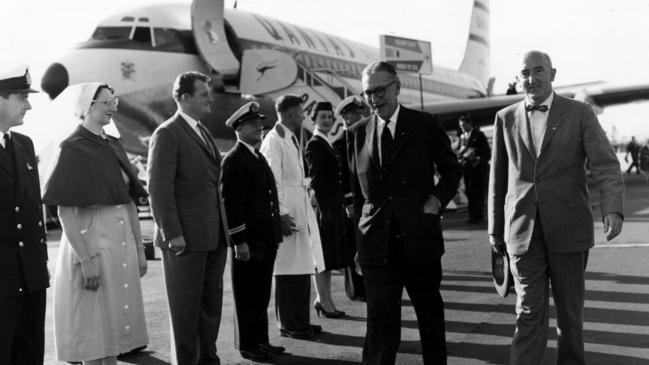
Officials were on the tarmac trying to hold back the media, dignitaries and other curious invited guests to the inaugural Qantas jet airliner flight, from Sydney to San Francisco.
One of the officials was worried about the powerful jet engines and was heard to tell the photographers “We don’t want anyone to get sucked in.”
Minister for Shipping, Transport and Civil Aviation Shane Paltridge was there to officiate, as his wife Elizabeth, assisted by Qantas founder and chairman Hudson Fysh, snipped a red white and blue ribbon announcing “I christen this aircraft the City of Canberra and may God bless all who fly in her.”
The passengers were all bundled aboard, as was a bag of mail that had been handed over to the captain, Ian Ralfe, by postmaster general Charles Davidson.
The jet then began rolling along the runway, followed by some of the cars containing VIPs. But while the cars stayed earthbound the 707 headed skyward toward America, bustling in a new era in intercontinental travel.
It had been a bumpy path to the runway for Qantas. The airline, founded in Queensland in 1920, had started out offering mail services, joy flights and shuttling passengers around the remote regions of Australia, but in the 1930s combined with Britain’s Imperial Airways to offer its first international flights using flying boats.
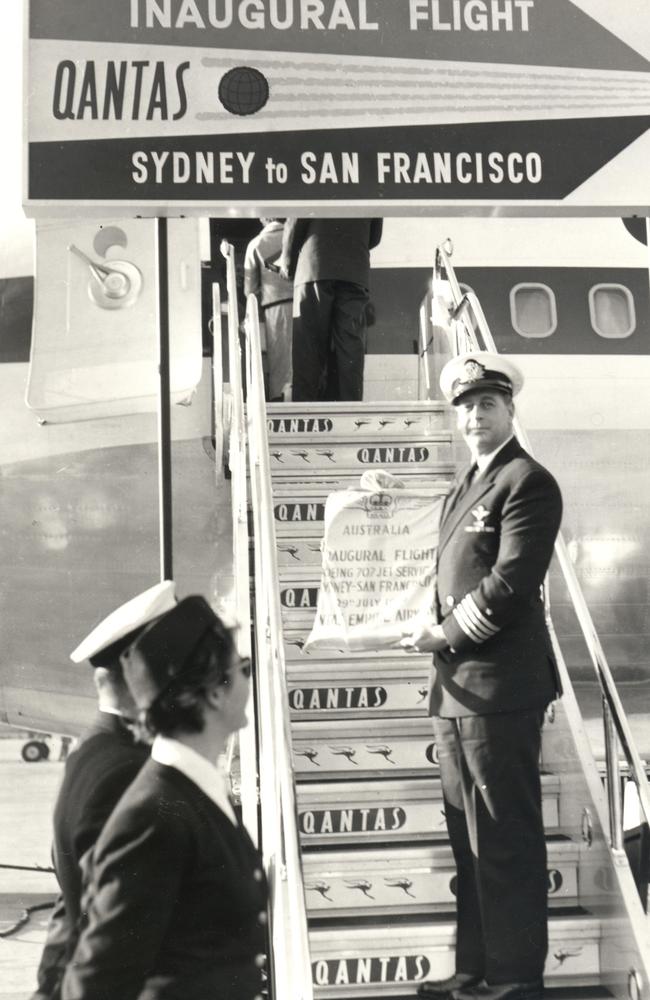
Imperial Airways merged with the British Overseas Airways Corporation (BOAC) in 1939 and in 1947 the Australian government bought out BOAC’s share of Qantas to nationalise the airline.
The airline continued to expand but in 1952 Fysh resisted pressure from the British government to buy the world’s first commercial jet airliner, the de Havilland Comet.
Although it would have brought Australian commercial aviation into the jet era, he was not convinced the Comet was economically viable.
It turned out to be a wise decision.
The Comet suffered three serious crashes, in 1953 and 1954, later found to be due to metal fatigue, and fleets using the jets were grounded until the problems were sorted out.
Instead Fysh went with the propeller powered Lockheed Super Constellations.
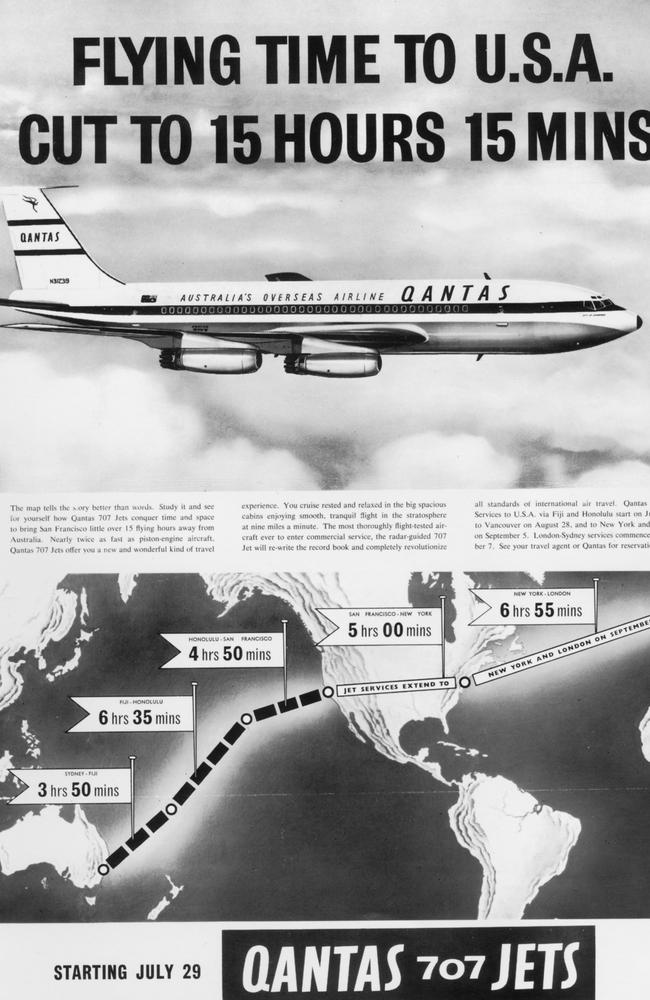
But with new, more efficient commercial passenger jets in development, Fysh knew Qantas would soon need make the move toward jet aircraft.
In 1956 he ordered several Boeing 707-138, knowing that Pan Am, Air France, Sabena and Lufthansa had already placed orders.
In 1958 the Super Constellations made Qantas the second around-the-world airline after Pan Am. It was paving the way for the 707. But because Pan Am took delivery of its jets earlier than Qantas, it was preparing to launch its service to Australia six months before Qantas could start its service to the US.
The Australian government helped to slow down the arrival of Pan Am, announcing that a study needed to be conducted to ensure the runway at Sydney could handle the 707. By perhaps not too convenient a coincidence the study would take six months.
Three jets were flown out to Australia in June and July 1959. The first 707 to arrive in Sydney was on July 5, 1959. But plans to start flights to the US were delayed when the aircraft chosen for the first flight suffered an accident that damaged its undercarriage.
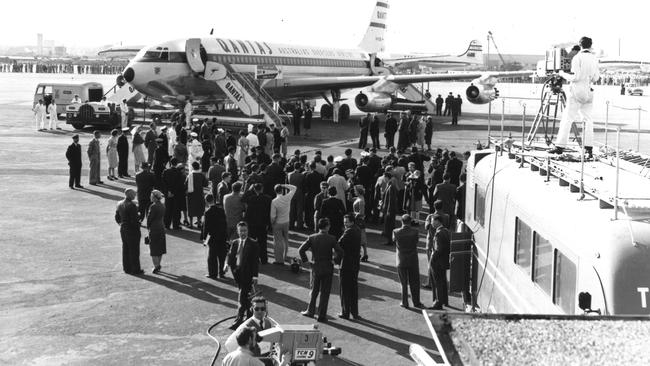
On July 29, 1959, VH-EBB took off on its first flight from Sydney to San Francisco.
At the launch ceremony Fysh had said of the race to start a jet service between the two countries “Australian had either to be in it or out of it. None of us would let the Australian pioneering spirit down.”
The aircraft halved the flying time to the US, the first flight taking 16 hours and 46 minutes. Two months later Qantas expanded the route to London, via New York.
Fysh’s instinct about the 707 being more economical proved right.
Twice as fast as the Super Constellation and able to carry twice as many passengers, it soon brought airfares down to the point where they were more affordable to a wider range of Australians.


